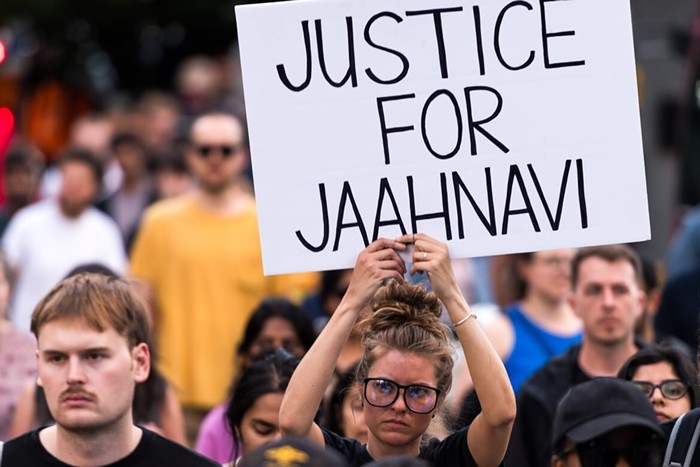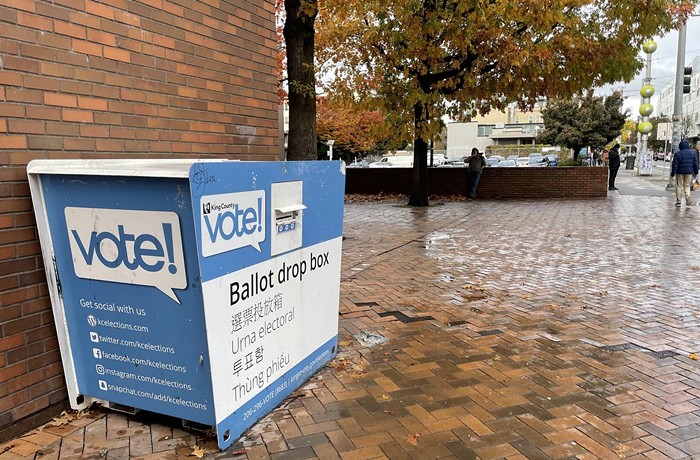If you read only the first page of this report, you'd be left with the impression that blacks and Latinos are once again getting screwed by the system, that their lot in America was continuing to worsen. But if you read deeper into the article, beyond its big photo of the proverbially shafted minority, you'd start to wonder why they were focusing on race, as "The Digital Divide" is actually an issue of class, not race. Witness the lack of high-speed Internet connections in rural areas and working-class suburbs like West-Seattle.
The fact of the matter is, there's money to be made in black communities, and even here in Seattle plans are already underway to make sure blacks and other minorities become full-fledged Internet consumers. Though the fiber-optic trunk lines passed by the Central District and Rainier Valley, these neighborhoods are not entirely shut off from high-speed Internet access. A computer user residing in one of Seattle's predominantly black neighborhoods can either get fast access through DSL (Digital Subscriber Line, recently offered in the Central District by US West), which is at least as fast as the famed T-1 line, or wait for another month or so and get it through their television cable, which is purportedly the fastest access to the Internet.
One cable company that's hot for the black market is Millennium Digital Media, which recently took over Summit Cablevision. Their vice president of marketing, Barbara Vraspir, was simply gushing with excitement when she told me all they have planned for the estimated 120,000 minority residents in the Central District and Rainier Valley.
"We are delighted to serve ethnically diverse neighborhoods," she said, with a burst of enthusiasm that smothered me like a big, happy, hairy dog -- nothing could hold her tongue back. "We are colorblind! We have been in the [Central District] since the late '80s, offering Black Entertainment Television. We are the only cable [company] to offer BET all day to our customers! Now we are in the process of upgrading the whole neighborhood in the C.D., and offer the same access that Queen Anne has. We have already rebuilt half of our network, and eventually, yes, cable-speed access and interactive service will flow...." The message from Millennium Digital Media is clear: They are not going to leave minorities alone, not in a million years.
At about $30 to $35 a month for their "Home Office Plan," you can hardly blame them. Indeed, USA Today and others who emphasize the race line of "The Digital Divide" are obscuring the class aspects of the digital future. The greater and more alarming disparities are between small companies and big businesses, and between coastal urban centers and inland rural areas. Small towns have no hope of getting high-speed lines in the near future, since most "high-tech capitalists" refuse to foot the bill for laying down expensive optic cables to remote areas. The situation is so severe that some analysts are predicting the emergence of a "digital dust bowl" as fewer and fewer young people return to small towns.
If we look at the map of Seattle composed by InContext, we find that fiber-optic trunk lines also clearly miss working-class white suburbs such as West Seattle -- which is even further from fiber-optic lines than the ethnically diverse neighborhoods in Central and South Seattle. But will a newspaper like USA Today open a "special report" with the news that poor and working-class whites are at risk of being left behind? Will it highlight the fact that poor inner-city blacks are twice as likely to have access to the Internet than poor whites in rural areas?
The fact is, the gap between blacks and whites is not "devastating." Rather, it is rapidly closing. (The fastest-growing group of Internet users is African Americans -- a 40 percent increase last year alone.) Believe me, blacks will not be left out the "information age," simply because -- as Millennium Digital Media knows -- the Internet needs more consumers. This is the heart of the matter. This is why they are "colorblind": They can only see green. So plug in, brothers and sisters, and prepare to consume at the speed of light.



















